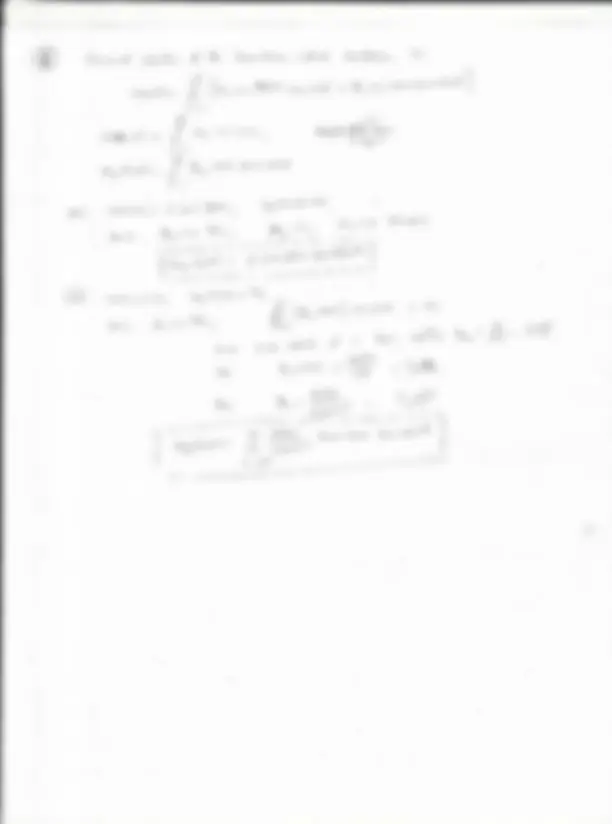



Study with the several resources on Docsity

Earn points by helping other students or get them with a premium plan


Prepare for your exams
Study with the several resources on Docsity

Earn points to download
Earn points by helping other students or get them with a premium plan
Community
Ask the community for help and clear up your study doubts
Discover the best universities in your country according to Docsity users
Free resources
Download our free guides on studying techniques, anxiety management strategies, and thesis advice from Docsity tutors
The solutions to test 2 of math 3363 – spring 2016. It includes the computation and discussion of the fourier sine series of a given function, the application of the method of separation of variables to derive ordinary differential equations for a damped vibrating string, and the calculation of the particular solution for a vibrating string with given initial conditions.
Typology: Slides
1 / 3

This page cannot be seen from the preview
Don't miss anything!


Math 3363 – Spring 2016 Name:
Test #
Please, write clearly and justify all your steps, to get proper credit for your work. You can cite general results from the book, but no examples or exercises.
(1)[5Pts] Compute the Fourier sine series of f
f (x) =
x if 0 ≤ x ≤ (^12) 1 − x if 12 < x ≤ 1 , valid in [0, 1] and discuss its convergence, that is, indicate for which values of x ∈ [0, 1] the Fourier sine series of f converges to f , where it does not and which value it takes at those points. Sketch the Fourier sine series of f.
(2)[3Pts] Consider a damped vibrating string that satisfies the equation
ρ
∂^2 u ∂t^2
∂^2 u ∂x^2
− β
∂u ∂t
, 0 < x < L,
Apply the method of separation of variables to derive two ordinary differential equations with respect to time and space variables.
(3)[8Pts] Consider a vibrating string of uniform density and tension, with length L = 1 and fixed ends. We found that vertical displacement is modelled by the wave equation ∂^2 u ∂t^2
= c^2
∂^2 u ∂x^2
, 0 < x < 1 ,
with B.C. u(0, t) = 0, u(1, t) = 0. Compute and write explicitly the particu- lar solution up(x, t) for the given I.C. below:
(a) u(x, 0) = 2 sin 3πx, ∂u∂t (x, 0) = 0, 0 < x < 1. (b) u(x, 0) = 0, ∂u∂t (x, 0) = v 0 , 0 < x < 1. HINT: Use the calculation from the textbook (p.95-96) showing that the Fourier sine series
n=1 bn^ sin^ nπx^ of the function^ f^ (x) = 1, for 0 ≤ x ≤ 1, has coefficients bn =
0 if n even, 4 /(nπ) if n odd.
q''l.,<J"]
( ',^
rS 60 Z d['a^ Stua^ raTiX, yr= (^) I
'-
{
,) (^) niT
S,,^t 5-8.rr -c
wl*n- a
t (^) S eur{T (^ 'rl v^ t'rJ^ S^ 't"rrgrt Y^ u'[-f^ - Tt{ $t v^ I^ 5I Rf-'g^ c^ 'n^ {€R^ cr€^ s^
f"
f;uP?.r.& r'tC-,^ ll= J;t-" PDe:
D, v^ tJ.r-^ b.[^ 'iAI't" -ftr^^
tJ-..t
WE o$Trlrr'l
cA (^) C*) 1"C?l
c-Plxlhftl ' 2_
l
"L x' o1l'
dv1 L,! d,xz
-\
o[ f-
=
tdqT
dLh
,L ?L
-d;L yctk^ t-'
Tvl
2r_
_r f
)tNE sERTEJ^4 CUI
I